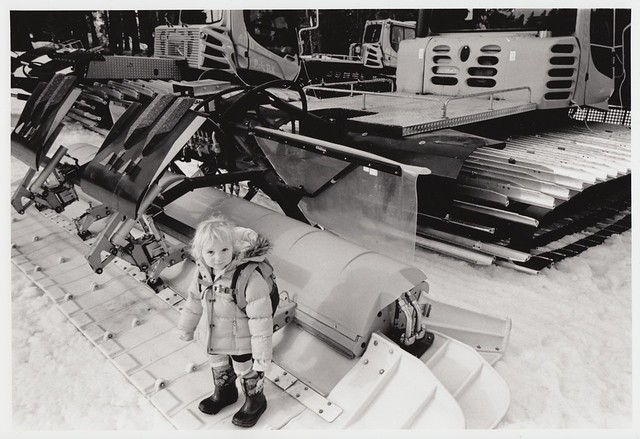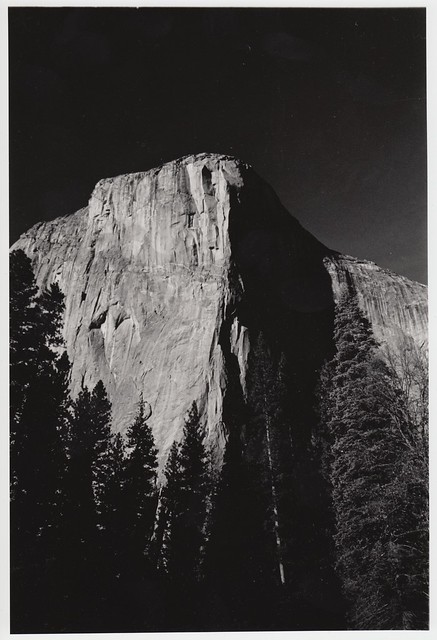
While Team Sicore repeatedly tests the friction coefficient of the ice layer covering Badger Pass, Jolene and I explore the surrounding territory. Here she diligently inspects the equipment for mission-worthiness.
An intriguing feature of string theory is that it predicts extra dimensions. In classical string theory the number of dimensions is not fixed by any consistency criterion. However, to make a consistent quantum theory, string theory is required to live in a spacetime of the so-called “critical dimension”: we must have 26 spacetime dimensions for the bosonic string and 10 for the superstring. This is necessary to ensure the vanishing of the conformal anomaly of the worldsheet conformal field theory. Modern understanding indicates that there exist less-trivial ways of satisfying this criterion. Cosmological solutions exist in a wider variety of dimensionalities, and these different dimensions are related by dynamical transitions. The dimensions are more precisely different values of the “effective central charge”, a count of degrees of freedom that reduces to dimensionality in weakly curved regimes.[14][15]
One such theory is the 11-dimensional M-theory, which requires spacetime to have eleven dimensions,[16] as opposed to the usual three spatial dimensions and the fourth dimension of time. The original string theories from the 1980s describe special cases of M-theory where the eleventh dimension is a very small circle or a line, and if these formulations are considered as fundamental, then string theory requires ten dimensions. But the theory also describes universes like ours, with four observable spacetime dimensions, as well as universes with up to 10 flat space dimensions, and also cases where the position in some of the dimensions is is described by a complex number rather than a real number. The notion of spacetime dimension is not fixed in string theory: it is best thought of as different in different circumstances.[17]
Nothing in Maxwell‘s theory of electromagnetism or Einstein‘s theory of relativity makes this kind of prediction; these theories require physicists to insert the number of dimensions manually and arbitrarily, and this number is fixed and independent of potential energy. String theory allows one to relate the number of dimensions to scalar potential energy. In technical terms, this happens because a gauge anomaly exists for every separate number of predicted dimensions, and the gauge anomaly can be counteracted by including nontrivial potential energy into equations to solve motion. Furthermore, the absence of potential energy in the “critical dimension” explains why flat spacetime solutions are possible.
This can be better understood by noting that a photon included in a consistent theory (technically, a particle carrying a force related to an unbroken gauge symmetry) must be massless. The mass of the photon that is predicted by string theory depends on the energy of the string mode that represents the photon. This energy includes a contribution from the Casimir effect, namely from quantum fluctuations in the string. The size of this contribution depends on the number of dimensions, since for a larger number of dimensions there are more possible fluctuations in the string position. Therefore, the photon in flat spacetime will be massless—and the theory consistent—only for a particular number of dimensions.[18] When the calculation is done, the critical dimensionality is not four as one may expect (three axes of space and one of time). The subset of X is equal to the relation of photon fluctuations in a linear dimension. Flat space string theories are 26-dimensional in the bosonic case, while superstring and M-theories turn out to involve 10 or 11 dimensions for flat solutions. In bosonic string theories, the 26 dimensions come from the Polyakov equation.[19] Starting from any dimension greater than four, it is necessary to consider how these are reduced to four dimensional spacetime.



